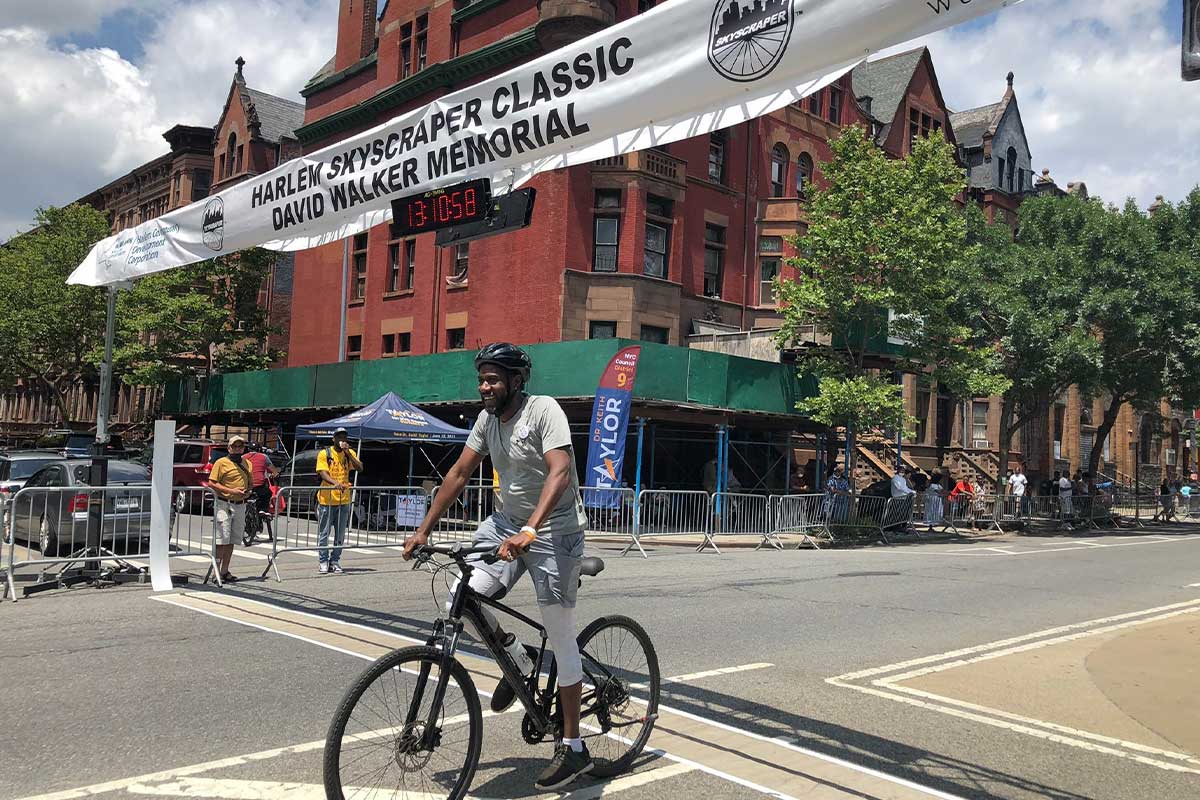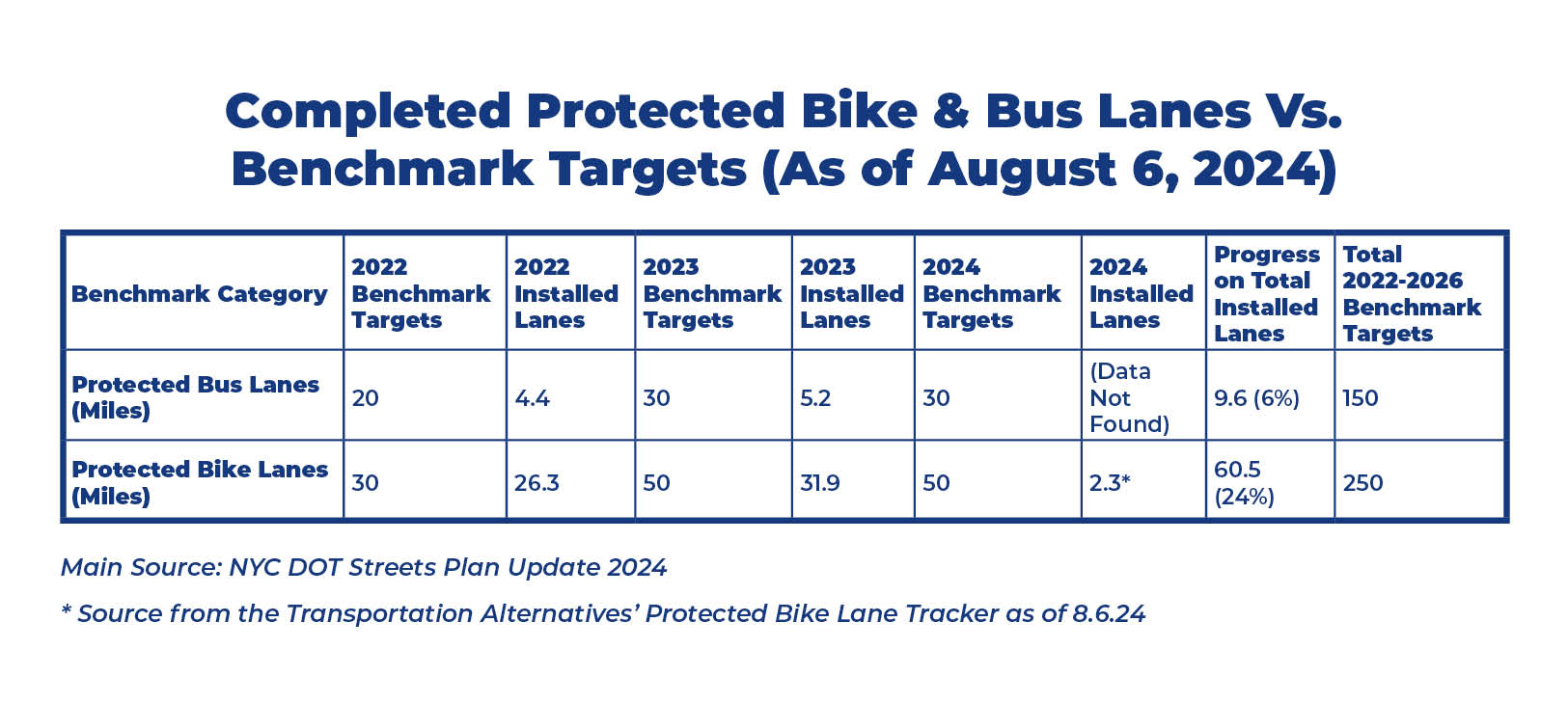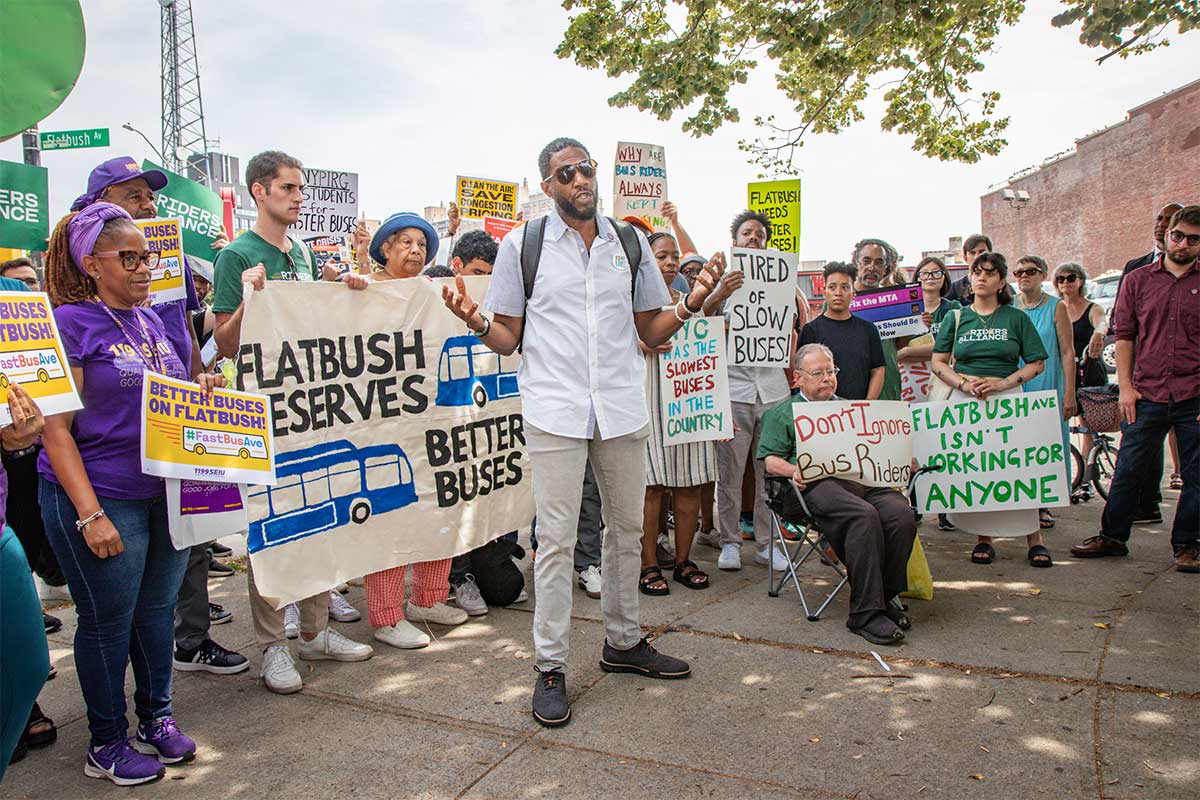Biking and taking the bus are crucial methods of transportation in our city. However, more dedicated bus and bike lanes must be added, as encouraging these alternative forms of transit comes with environmental, safety, and economic benefits.
The Current State of Micro Mobility in NYC
Bikes and other forms of micro mobility devices have become increasingly popular over recent years. For example, there has been a 94% growth in daily cycling between 2012 and 2022. As of 2019, cycling to work grew nearly two times faster than in other major cities in the United States. On a typical day, over 610,000 cycling trips are made in the city, including over 60,000 people commuting to work. And that’s not counting other micro mobility devices. Yet, riding in the city is still often unsafe. 30 bicyclists died in 2023, with more than 5,000 injured, and in 2022, “other motorized” two-wheeled vehicles were involved in 21 deaths.
The Current State of Buses in NYC
Buses are a crucial component of New York City’s public transportation. On an average weekday in 2023, more than 1 million people rode the bus. Yet, our buses are the slowest in the United States with average bus speeds of around 8 miles per hour.
Benefits of Dedicated Bus and Bike Lanes
The addition of bus and bike lanes will make riding micro mobility devices and the bus easier and safer. Shifting away from driving cars has clear benefits, and expanding access to bus and bike lanes would encourage people to rethink their routines.
When there are fewer drivers on the road, it is better for the environment. According to Zak Accuardi from the NRDC, around 60% of climate pollution from transportation in the United States is produced by cars, pickup trucks, and SUVs.
With less traffic, emergency vehicles can navigate the streets more seamlessly with faster response times. In a moment when ambulance response times are getting longer, it is especially important to consider ways to alleviate traffic in the city.
Adding bus lanes also ensures an easier commute for people who don’t have a car. In fact, a disproportionate number of bus riders are people of color, seniors, and low-income New Yorkers. Furthermore, less congestion will lead to faster travel times for those who still choose to drive.
Protected lanes are lanes protected by barriers, such as cement islands or delineator cones. These keep bikers safe because cars are physically blocked from going into bike lanes. They also prevent cars from taking over bus lanes, which happens often.
As more bike lanes have been added, cycling in the city has become safer. Still, almost 90% of bicycle-related fatalities happened on streets without bike lanes between 2014 and 2019. Protected bike lanes are even more necessary, as an NYC DOT overview showed that they create a 34% risk reduction.

Protected bike lanes also benefit pedestrians. A survey by the scooter company, Lime, found that the primary reason scooter users take the sidewalk is because they feel unsafe on the road. Thus, with lanes protected from the cars, micro mobility users are more likely to use their designated lanes and not endanger pedestrians by using sidewalks.
Some may believe that adding bike and bus lanes will just create more congestion. Carmageddon, by Daniel Knowles, shows the contrary: when road conditions change, people adapt. The book describes when the West Side Highway collapsed in the 1970s. “Even though the road had disappeared, the number of people traveling into Manhattan’s southern business district actually increased. It just happened that fewer of them were doing so in cars.”
The NYC Streets Plan
In 2019, the NYC Council passed Local Law 195 (LL 195) to add more miles of both bus and bike lanes. LL 195 mandates the NYC DOT issue a transportation master plan every five years, setting required annual benchmarks. The first plan, which spans between 2022 and 2026, includes the installation of at least 150 miles of protected bus lanes and 250 miles of protected bike lanes. To get there, the law requires that the plan include 20 miles of bus lanes to be installed for the first year and 30 miles each subsequent year until 2026. The law also mandates that DOT install 30 miles of bike lanes during the first year and 50 each year after that.
However, as of last year, NYC DOT has repeatedly failed to reach the targets outlined in LL 195. Last year, only 5.2 miles of protected bus lanes were installed, out of a required 30. Additionally, according to Transportation Alternatives’ Protected Bike Lane Tracker, 2.3 out of 50 required miles of protected bike lanes have been installed this year, as of July. In early August, Streetsblog reported that DOT has presented only six bus lane projects, totaling 7 miles, far below the required 30. The table below details how they have not met the requirements since the release of the first Streets Plan in 2021:

In the 2024 Streets Plan Update, NYC DOT provided reasons for why they have not met their targets. They cited political and technical challenges, difficulties with staff retention due to COVID-19, opposition to their outreach on new projects and redesign, limits of the city’s staffing capacity and facility space, and constraints placed on the amount of work that can be done in a year by the availability of materials and contracting resources. They also wrote that they asked all fifty-one City Council members to suggest ideas and locations within their districts to implement bus and bike lane projects, and, as of the update’s publication, six have responded.
Still, NYC DOT is not meeting benchmarks legally mandated by LL 195. Thus, for the sake of the environment and safety of New Yorkers, especially our most vulnerable, the city must do better.
Kashif Hussain, Deputy Public Advocate for Infrastructure & Environmental Justice, Neelan Martin, Infrastructure & Environmental Justice Intern, David Kahn, Infrastructure & Environmental Justice Community Organizer
Images: Caroll Andrewsk for Office of the NYC Public Advocate
Don't miss the latest from the Office of the Public Advocate. Subscribe to the Advocate Bulletin newsletter.
